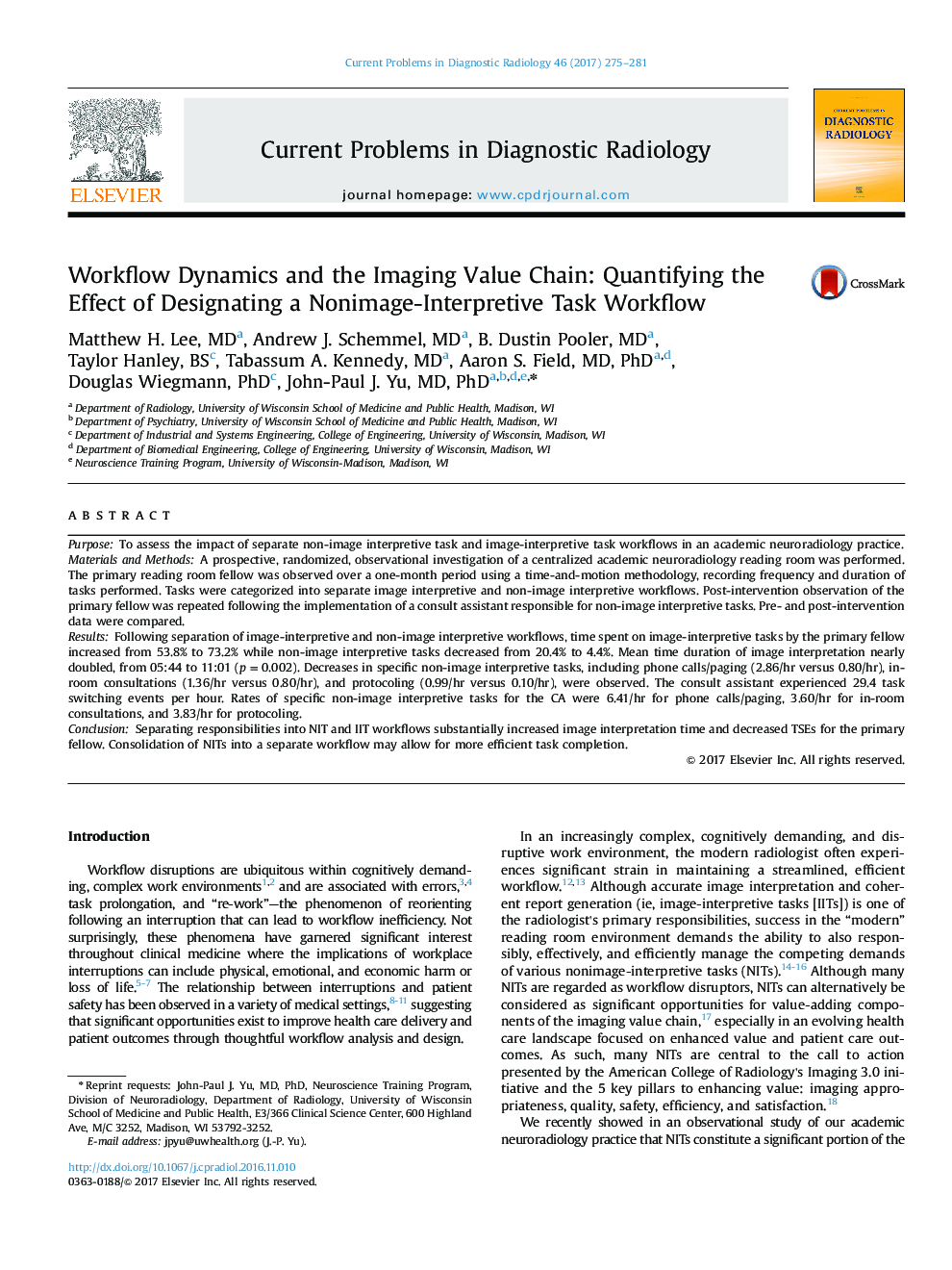| Article ID | Journal | Published Year | Pages | File Type |
|---|---|---|---|---|
| 5725890 | Current Problems in Diagnostic Radiology | 2017 | 7 Pages |
PurposeTo assess the impact of separate non-image interpretive task and image-interpretive task workflows in an academic neuroradiology practice.Materials and MethodsA prospective, randomized, observational investigation of a centralized academic neuroradiology reading room was performed. The primary reading room fellow was observed over a one-month period using a time-and-motion methodology, recording frequency and duration of tasks performed. Tasks were categorized into separate image interpretive and non-image interpretive workflows. Post-intervention observation of the primary fellow was repeated following the implementation of a consult assistant responsible for non-image interpretive tasks. Pre- and post-intervention data were compared.ResultsFollowing separation of image-interpretive and non-image interpretive workflows, time spent on image-interpretive tasks by the primary fellow increased from 53.8% to 73.2% while non-image interpretive tasks decreased from 20.4% to 4.4%. Mean time duration of image interpretation nearly doubled, from 05:44 to 11:01 (p = 0.002). Decreases in specific non-image interpretive tasks, including phone calls/paging (2.86/hr versus 0.80/hr), in-room consultations (1.36/hr versus 0.80/hr), and protocoling (0.99/hr versus 0.10/hr), were observed. The consult assistant experienced 29.4 task switching events per hour. Rates of specific non-image interpretive tasks for the CA were 6.41/hr for phone calls/paging, 3.60/hr for in-room consultations, and 3.83/hr for protocoling.ConclusionSeparating responsibilities into NIT and IIT workflows substantially increased image interpretation time and decreased TSEs for the primary fellow. Consolidation of NITs into a separate workflow may allow for more efficient task completion.
